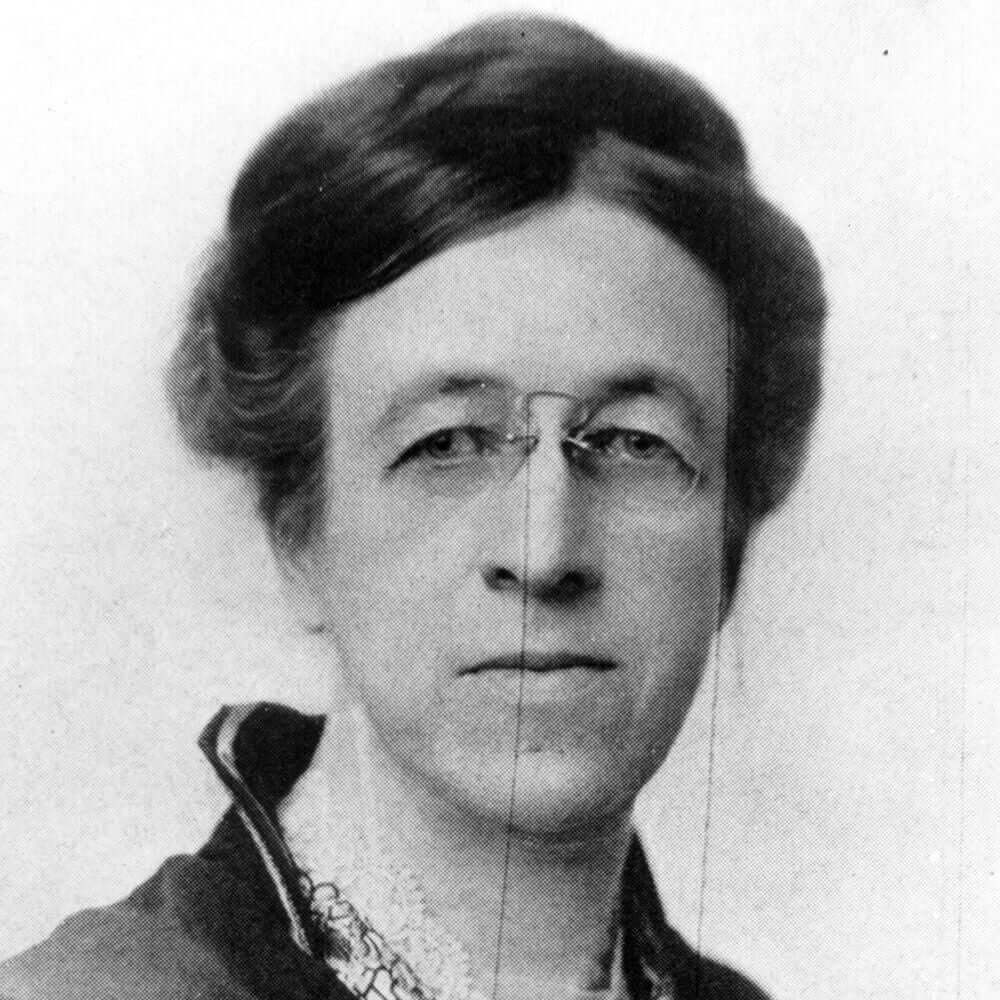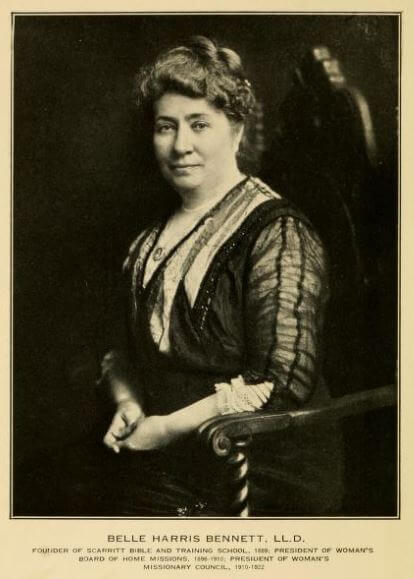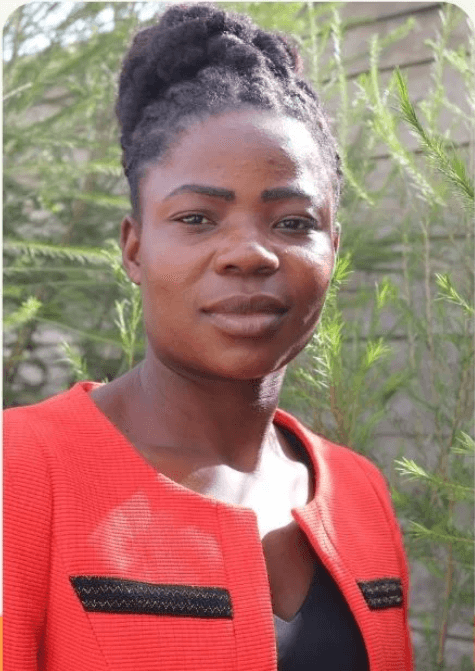March is Women’s History Month, and we are taking a special focus on various women who have promoted hope and healing through the Church and beyond by means of their vocations, callings, and ministry to others. This series is also connected to the fiftieth anniversary of the General Commission on the Status and Role of Women (GCSRW), whose work seeks to enable full and equal participation of women in the life of the United Methodist Church, locally, nationally, and internationally. In celebration of fifty years of GCSRW, we also celebrate the many ways in which women have served others and brought hope and healing to families, communities, and congregations. This month, we ask you to consider how you might take inspiration from these stories and engage your own local ministry opportunities.
50th Anniversary blog series:
One of the first professionalized modes of ministry for women came in the role of deaconesses. The deaconess, modeled first by Phoebe in Romans 16:1-2, is a consecrated position for women. In various denominations, the deaconess has different functions and specializations. The modern-day movement of deaconesses really ramped up in 1830, following the implementation of the order by the Lutherans. Initially, the role required celibacy and avoiding marriage. Once a woman married, she was “retired” from deaconess service. In the Methodist tradition, deaconesses have typically been an office of laywomen. However, beyond the 1939 merger, when the north, south, and Methodist Protestants merged, they moved the office of deaconess under the Women’s Division for Christian Service. In 2004, they added the role of home missioner for men to have equal opportunity to serve in unique ways that did not require ordination. (1)

Lucy Rider Meyer (Photo Credit: GETS Digital Collections)

Chicago Training School (Photo Credit: GETS Digital Collections)

Belle Harris Bennett (Photo Credit: Wikimedia)
Deaconesses became a major outlet for Methodist Episcopal women in the late nineteenth century to serve the oppressed and marginalized of their communities while also expanding their capabilities beyond that of socially-constructed domesticity. In 1885, Lucy Rider Myer opened the first training school for deaconesses in the Methodist Episcopal Church, the Chicago Training School. At CTS, women could take courses in Bible, Bible history, medicine, music, church history, and pedagogy. One special area of the program focused on visitation, or practical experience, where students visited mercy missions, the poor, the ill, and the unchurched. Other schools began popping up across the United States. The New England Deaconess School opened in Boston in 1889. In the Methodist Episcopal Church South, Belle Harris Bennett started the Scarritt Bible and Training School in Kansas City, Missouri, with a $25,000 grant from namesake Nathan Scarritt. The school moved to Nashville in 1928. Scarritt College offered opportunities for southern Methodist women to also engage the same types of deaconess and missionary roles as those in the northern branch of the denomination. All of these training schools pioneered the development of a new area of social sciences: sociology. As deaconesses served their local contexts, they also researched the social problems occurring and provided programming for social services and education, while also searching and discussing the role of the Church in providing a solution. The training school movement eventually fizzled out, but the role and necessity of deaconesses did not. (2)
During the 1918 Influenza Pandemic, churches shuttered and many social services were delayed. While canceling services kept people from gathering and spreading influenza while also refraining from doing harm and while continuing their faith practices confined at home, Methodists deaconesses across the country remained diligent to their call of service. At their 1919 meeting of the Women’s Missionary Council of the Methodist Episcopal Church, South, there were many reports of activities happening amidst the influenza pandemic just in the area of Birmingham, Alabama:
At the Community House in Ensley, Alabama, Deaconness Dorothy Crim (head resident) spoke of 1918 being their “greatest year, because the work has been wider and more varied, presenting a greater opportunity for service, and we have been able to do more heart work… one of the greatest opportunities was offered during the influenza epidemic.” Over those three weeks, the women serving the house served as neighborhood nurses, assisted doctors, prepared food for the community, and cleaned and lended laundry. At the end of November, they provided a community-wide Thanksgiving service.
At the Avondale Wesley House, Deaconness Florence Blackwell requested an additional worker because of the increase in work. She and her volunteers were making daily rounds of the mill village to check in on people and offer service to those in need. A Deaconness serving the local First Church in Birmingham, Margaret Ragland, saw her task as carrying forward the work of the Red Cross in the area and making home visits, while also making sure the work of the church office continued. She wrote that the “year has brought much anxiety and sorrow and there has come to many of our people the baptism of affliction, binding us all in the fellowship of suffering that is now far-reaching and all-inclusive.” (3)
Graduates of the Chicago Training School deployed almost immediately in 1888, as Methodist deaconesses, Elizabeth Maxey and Katherine A. Blair arrived in Calcutta in 1888. Maxey served in India for thirty years as a superintendent of a Deaconess Home while Blair was an evangelist around the country. In just a few years in Calcutta, with the help of many more stationed deaconesses, many Indian women were consecrated as deaconesses. In the year 1890 alone, they baptized more women and girls than any previous year, and they worked to deploy 31 missionaries, 29 assistant missionaries, and 233 women Bible teachers. More than 1,200 women were learning to read, while another 7,000 received religious instruction. Medically, these missionaries were treating 22,000 in hospitals and dispensaries and training 13 medical students as well. Deaconesses served across the world and at missions within the United States. Western China received several deaconesses that oversaw Deaconess Homes and schoolhouses. Deaconesses organized a Temperance Legion in Mexico in 1900, and then developed a school that was ranked as the best school in the city and the “only Evangelical school for girls.” By 1928, Mexico saw its first homegrown consecration of a deaconess. (4)
In 1903, a deaconess training school opened in Manila, Philippines, while issuing in medical work in 1906 and dormitory work in 1914. Deaconesses expanded their work beyond Manila by 1906. When other training schools opened, the language around deaconess was not furthered, but instead, its graduates were called Bible women. Regardless of the vernacular, deaconesses were diligently expanding their witness and district superintendents suggested “that more than one-half our converts each year are the direct result of the work of our Bible women and deaconesses.” Deaconesses trained in the Philippines were in high demand by churches and they could never graduate enough women in time for the need. (5)
Today in the Philippines, deaconesses continue to enhance ministry in the country’s missional context. One current Filipino deaconess and Executive Secretary of the Philippines Central Conference Board of Women's Work, Jennifer Ferariza-Meneses, provides hope and healing to all of her peers through her narrated fight with cancer while serving in an advocacy role through United Methodist Women in the Philippines Central Conference.
I did not face this health battle all by myself. I am grateful for I have the privilege to receive the gift of family and community care and support. I experienced some of the very rich Filipino values of “pagtutulungan” (teamwork), “pagmamalasakit” (concern/care) and “pakikipagkapwa” (sharing oneself with others) which made this journey a very meaningful one. Family and friends have shared with open hearts whatever resources they have to extend help for my treatment and recovery. My Board of Women’s Work circle which includes my colleagues, mentors, partners, here and abroad, and all women’s organizations in The United Methodist Church - Philippines, have been very supportive from the day I was diagnosed. Both collectively and individually, they assisted me with my tasks and responsibilities at the office while I was undergoing treatment, provided financial assistance, free medical services and love gifts, and took time to pray for my complete recovery in their personal devotion and group prayer meetings/events. Some of my closest friends raised funds by selling merchandise and products like cloth face masks, shirts, bread, and pastries. One of our family friends asked for cash gifts for his birthday from his handful of friends and colleagues to cover some of my medical expenses. Others sliced some portion from their salary and allowance to chip in and purchase some food supplies online for my daily nutritional needs.

Leah Wandera (Photo Credit: UMCom)
Healing is flowing. It is even overflowing. It flows naturally through the people’s value and love for life. I experienced the healing power of God which keeps flowing through people’s willingness to show compassion, love, and care in different and unexpected ways… Healing is communal. We, human beings, exist in this circle of life (in all its forms) interconnected with one another. In this healing journey, I have encountered the true meaning of “kapwa” in different circles of loving people and experienced a bond of support and solidarity. Our being “kapwa” is a recognition of a shared identity, an inner self, shared with others according to Virgilio Enriquez. It can create a circle of hope, a sharing space, a fellowship of love. My healing would not be my own victory but will be shared and celebrated with a community… Healing is forward-looking. Lessons of life from the past has been guiding me through a process of healing for a healthier version of my whole self. Life has been teaching me further to embrace all its movements gearing towards a direction and continuation of fulfilling a call to protect life, seek justice, love peace. I would let my days ahead unfold on its own, trusting this lifetime process of coping, adapting, changing and becoming as a person, as part of humanity and of God’s creation. (6)
Today, deaconesses and home missioners serve out of the United Methodist Women agency. In 2016, they received approval to become the denomination’s first recognized lay order of ministry. In the same year, they were also given ecclesiastical support in chaplaincy endorsement, making them the only lay order supported. Last year, the first woman, Leah Wandera of Kenya, in the Africa Central Conferences was commissioned as a deaconess, and she will receive consecration at the upcoming UMW Assembly. Wandera is just the first, though, as two more people (one home missioner in Zimbabwe and a deaconess in Kenya) are to be consecrated this year, and there are six more in candidacy. United Methodist Women and the General Commission on the Status and Role of Women are significant partners in ministry and affirm the ministry of women in all aspects of the life of the Church. With the groundbreaking work of Methodist women throughout the movement’s history, GCSRW can continue to focus on the increased representation of women within the denomination’s structure while United Methodist Women promote service, education, and mission opportunities to all people across the globe. (7)
References:
(1) Hilah F. Thomas et al., eds., Women in New Worlds: Historical Perspectives on the Wesleyan Tradition (Women in New Worlds Conference, Nashville: Abingdon, 1981).
(2) Hilah F. Thomas et al., eds., Women in New Worlds: Historical Perspectives on the Wesleyan Tradition (Women in New Worlds Conference, Nashville: Abingdon, 1981).
(3) The Methodist Episcopal Church, South, Ninth Annual Report of the Women’s Missionary Council of The Methodist Episcopal Church, South, for 1918-1919 (Nashville, Tenn.: Publishing House of the Methodist Episcopal Church, South, 1919).
(4) Mary Isham, Valourous Ventures: A Record of Sixty and Six Years of the Woman’s Foreign Missionary Society, Methodist Episcopal Church (Boston, Mass.: Methodist Episcopal Church Publication Office, 1936).
(5) Mary Isham, Valourous Ventures: A Record of Sixty and Six Years of the Woman’s Foreign Missionary Society, Methodist Episcopal Church (Boston, Mass.: Methodist Episcopal Church Publication Office, 1936).
(6) Jennifer Ferariza-Meneses, “Of Faith, Healing, and Wholeness” (Self-published, October 1, 2021).
(7) I want to extend my sincerest gratitude to wonderful and resourceful people within the United Methodist Women organization who helped connect the dots on some of the Deaconess/Home Missioner program, including Mollie James-Vickery, Sung-Ok Lee, and Megan Hale. Your knowledge is wonderful, but it is your service to the women of Church and to the world that is so deeply appreciated by me and so many women, because you’ve blazed a trail for women to step into the public sphere.

About the author
Rev. Emily Nelms Chastain is a PhD student at Boston University, where she focuses on 19th and 20th Century American Christian History and the intersectionality of faith and gender. She earned her B.A. in History at the University of Alabama at Birmingham in 2007 and graduated with an M.A. Religion and M.Div. in 2019 from Claremont School of Theology. She's an ordained United Methodist Deacon in the North Alabama Conference, and entered academia after serving for 9 years within the United Methodist Church where she worked in Connectional Ministries. Emily served as a reserve delegate to the 2016 General Conference and as a delegate for the 2016 Southeastern Jurisdictional Conference. She has served on the GCSRW board since 2016.
